Wines of Chile hosted an online tasting of red blends the other night. I jumped at the opportunity to participate for several reasons. First of all, schedule permitting; I rarely turn down the opportunity to try some new wines. Secondly I’ve been a long term fan of the quality, diversity and value at varying price points that’s coming out of Chile. And last, but certainly not least, it’s fun. The format for this tasting was very similar to one I took part in a few months back, and it’s a system that works. Master Sommelier Fred Dexheimer hosted the proceedings from New York City, The winemakers for each of the eight wines we tasted were gathered in a room in Santiago Chile and the rest of us looked on via the web and submitted questions through a chat function as well as commented back and forth. Additionally most folks Tweeted during the proceedings. Tasting the wines and making notes that night was great. Many of the offerings certainly seemed like they had the structure for at least medium term aging. With that in mind I went back to the wines after 24 hours to see how they evolved. Here are my thoughts on these eight wines, presented in the order we tasted them.
 Valdivieso 2005 Eclat – Fruit for this wine was sourced in the Melozal area of Maule Valley. This offering is a blend of Carignan (56%), Mourvedre (24%), and Syrah (20%). The Carignan vines have over 60 years of age on them. This wine was aged for 12 months in French oak. It has a suggested retail price of $27. This wine, the oldest of the bunch, has a deep garnet hue. Aromas of spice and cocoa are both prominent on the nose. Zingy raspberry flavors are underscored by rhubarb throughout the palate. Minerals and earth notes are both in abundance in the above average finish. This wine is a food lovers dream. The firm acidity makes it a natural partner for a very wide array of matches. I liked this wine so much I wanted to climb inside the bottle and get closer to it. I’d settle for a long weekend with a couple of cases and some delicious food to munch on. Bottom line, this is just an excellent wine that you’re going to want to keep reaching for more of. When I went back to this wine after 24 hours it had held steady and was drinking as well as it had the evening before.
Valdivieso 2005 Eclat – Fruit for this wine was sourced in the Melozal area of Maule Valley. This offering is a blend of Carignan (56%), Mourvedre (24%), and Syrah (20%). The Carignan vines have over 60 years of age on them. This wine was aged for 12 months in French oak. It has a suggested retail price of $27. This wine, the oldest of the bunch, has a deep garnet hue. Aromas of spice and cocoa are both prominent on the nose. Zingy raspberry flavors are underscored by rhubarb throughout the palate. Minerals and earth notes are both in abundance in the above average finish. This wine is a food lovers dream. The firm acidity makes it a natural partner for a very wide array of matches. I liked this wine so much I wanted to climb inside the bottle and get closer to it. I’d settle for a long weekend with a couple of cases and some delicious food to munch on. Bottom line, this is just an excellent wine that you’re going to want to keep reaching for more of. When I went back to this wine after 24 hours it had held steady and was drinking as well as it had the evening before.
 De Martino 2006 “Las Cruces” Single Vineyard Old Bush Vines – Fruit for this wine is from a single vineyard in Cachapoal Valley. This offering is a blend of Malbec (66%) and Carmenère (34%); there are also very low amounts of some other varieties. This wine was aged in French oak for 14 months. It has a suggested retail price of $45. A hint of mint emerges in the nose of this wine. The palate is layered and remarkably restrained for a blend of predominately Malbec and Carmenère. That said when re-tasting it after 24 hours it was significantly more expressive. The red fruits, tinged by hints of darker black fruits were more apparent on day two. The finish which has very good length shows off some sour red fruit elements and continued spice. This wine is remarkably smooth, refined and elegant. In short it’s Grace in a bottle. Delicious now, particularly with food, it should age well for 8 or more years. Pair this with hearty foods for memorable results.
De Martino 2006 “Las Cruces” Single Vineyard Old Bush Vines – Fruit for this wine is from a single vineyard in Cachapoal Valley. This offering is a blend of Malbec (66%) and Carmenère (34%); there are also very low amounts of some other varieties. This wine was aged in French oak for 14 months. It has a suggested retail price of $45. A hint of mint emerges in the nose of this wine. The palate is layered and remarkably restrained for a blend of predominately Malbec and Carmenère. That said when re-tasting it after 24 hours it was significantly more expressive. The red fruits, tinged by hints of darker black fruits were more apparent on day two. The finish which has very good length shows off some sour red fruit elements and continued spice. This wine is remarkably smooth, refined and elegant. In short it’s Grace in a bottle. Delicious now, particularly with food, it should age well for 8 or more years. Pair this with hearty foods for memorable results.
 Estampa 2008 Gold Assemblage Carmenère – The fruit for this offering was sourced primarily at their Marchigue estate near the Pacific Ocean. This wine is a blend of Carmenère (57%), Cabernet Sauvignon (23%), Cabernet Franc (12%) and Petit Verdot (8%). This selection has a suggested retail price of $22. The first impression of this wine is the fresh fruit aromas that waft from the nose with conviction. They’re underscored by spice and a touch of herb. Throughout the palate loads of berry fruit flavors emerge and play key roles in what is a very expressive, multi-layered wine. Both earth and espresso notes come out to play in force on the lengthy and persistent finish. Re-tasting this the second day showcased how this wine can really open up with some air and its flavors become even more animated than before. This blend from Estampa has the structure and stuffing to age gracefully for a dozen years at minimum; in short it’s a baby today. More impressive, at $22 this wine is an outright steal. This would be an excellent choice to put away a case of to watch evolve over time. This is a real knockout. If you drink it now decant it for 3 hours to get the most out of it.
Estampa 2008 Gold Assemblage Carmenère – The fruit for this offering was sourced primarily at their Marchigue estate near the Pacific Ocean. This wine is a blend of Carmenère (57%), Cabernet Sauvignon (23%), Cabernet Franc (12%) and Petit Verdot (8%). This selection has a suggested retail price of $22. The first impression of this wine is the fresh fruit aromas that waft from the nose with conviction. They’re underscored by spice and a touch of herb. Throughout the palate loads of berry fruit flavors emerge and play key roles in what is a very expressive, multi-layered wine. Both earth and espresso notes come out to play in force on the lengthy and persistent finish. Re-tasting this the second day showcased how this wine can really open up with some air and its flavors become even more animated than before. This blend from Estampa has the structure and stuffing to age gracefully for a dozen years at minimum; in short it’s a baby today. More impressive, at $22 this wine is an outright steal. This would be an excellent choice to put away a case of to watch evolve over time. This is a real knockout. If you drink it now decant it for 3 hours to get the most out of it.
 Montes 2008 Limited Selection Cabernet Sauvignon Carmenère – Fruit for this blend was sourced at the Montes La Finca Estate in Apalta Valley. This offering is a blend of Cabernet Sauvignon (70%), and Carmenère (30%). This wine spent six months in American oak. It has a suggested retail price of $15. The dark hue of this wine struck me as it was decidedly more intense in color than the previous three. The nose is filled with heady black cherry and copious quantities of intoxicating plum pudding spice. Those characteristics continue through the palate where red and black cherry flavors play a significant role. The palate is quite layered and while everything is in proportion the flavors are intense, just short of explosive. Minerals such as graphite in addition to other elements like earth and continued black fruits dominate the solid finish. This wine surprised me; I didn’t expect it to be better the next day. In fact I thought this was a candidate to taste a little sluggish on day 2, boy was I wrong. The openness of the flavors really ratcheted up several notches after 24 hours. For $15 this wine offers tons of drinking pleasure. Enjoy it over the next 3-4 years to get the most of its exuberant youth.
Montes 2008 Limited Selection Cabernet Sauvignon Carmenère – Fruit for this blend was sourced at the Montes La Finca Estate in Apalta Valley. This offering is a blend of Cabernet Sauvignon (70%), and Carmenère (30%). This wine spent six months in American oak. It has a suggested retail price of $15. The dark hue of this wine struck me as it was decidedly more intense in color than the previous three. The nose is filled with heady black cherry and copious quantities of intoxicating plum pudding spice. Those characteristics continue through the palate where red and black cherry flavors play a significant role. The palate is quite layered and while everything is in proportion the flavors are intense, just short of explosive. Minerals such as graphite in addition to other elements like earth and continued black fruits dominate the solid finish. This wine surprised me; I didn’t expect it to be better the next day. In fact I thought this was a candidate to taste a little sluggish on day 2, boy was I wrong. The openness of the flavors really ratcheted up several notches after 24 hours. For $15 this wine offers tons of drinking pleasure. Enjoy it over the next 3-4 years to get the most of its exuberant youth.
 Maquis 2006 Lien – The fruit for this wine was sourced at the Maquis vineyards which are between two rivers. This vintage is a blend of Syrah (42%), Carmenère (30%), Cabernet Franc (12%), Petit Verdot (9%), and Malbec (7%). This wine was aged in all French oak. It has a suggested retail price of $19. Black fruits and spice are the dominant characteristics of the nose. The palate is loaded with juicy, red and black fruit flavors. Chocolate notes emerge as well along with spice elements. While the fruit is fresh and intense it never comes close to nudging over the top. In fact all of the elements come together lending themselves towards a wine that has both new and old world flourishes. I find that Lien has lots of wow factor. It’s going to have smart crowd appeal. It has the openness to appeal to the masses and the structure and complexity to keep more seasoned wine lovers happy. For $19 this wine is a very solid value. On the second day I found that it held its own quite nicely. Not built for long term aging, but it’ll drink well for five years. Having had this wine several times over the last few vintages, I can say that the quality and value have remained consistent.
Maquis 2006 Lien – The fruit for this wine was sourced at the Maquis vineyards which are between two rivers. This vintage is a blend of Syrah (42%), Carmenère (30%), Cabernet Franc (12%), Petit Verdot (9%), and Malbec (7%). This wine was aged in all French oak. It has a suggested retail price of $19. Black fruits and spice are the dominant characteristics of the nose. The palate is loaded with juicy, red and black fruit flavors. Chocolate notes emerge as well along with spice elements. While the fruit is fresh and intense it never comes close to nudging over the top. In fact all of the elements come together lending themselves towards a wine that has both new and old world flourishes. I find that Lien has lots of wow factor. It’s going to have smart crowd appeal. It has the openness to appeal to the masses and the structure and complexity to keep more seasoned wine lovers happy. For $19 this wine is a very solid value. On the second day I found that it held its own quite nicely. Not built for long term aging, but it’ll drink well for five years. Having had this wine several times over the last few vintages, I can say that the quality and value have remained consistent.
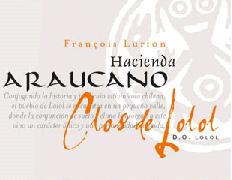 Hacienda Araucano 2008 Clos de Lolol – Fruit for this effort was sourced in the Lolol Valley. This offering is a blend of Syrah (31%), Cabernet Franc (29%), Cabernet Sauvignon (23%), and Carmenère (17%). The Cabernet Sauvignon and Carmenère vines are some of the last vines in the world not to have known Phylloxera. This wine has a suggested retail price of $23. Aromas of fleshy plum and chocolate sauce are both part of the nose. Cherry comes out in droves on the palate as well as loads of spice, black pepper in particular. Kirsch liqueur emerges on the finish along with flourishes of sour berry. This wine is layered and polished. It has firm but yielding tannins and solid acidity. It drinks well on its own but will be a terrific partner to full flavored foods. On the second day this wine had opened up just a touch more. Mostly it had held steady and showed again a day later that buying this wine for $23 is petty larceny. It stands as one of the two or three best values of these 8 in a tasting loaded with wines that over deliver.
Hacienda Araucano 2008 Clos de Lolol – Fruit for this effort was sourced in the Lolol Valley. This offering is a blend of Syrah (31%), Cabernet Franc (29%), Cabernet Sauvignon (23%), and Carmenère (17%). The Cabernet Sauvignon and Carmenère vines are some of the last vines in the world not to have known Phylloxera. This wine has a suggested retail price of $23. Aromas of fleshy plum and chocolate sauce are both part of the nose. Cherry comes out in droves on the palate as well as loads of spice, black pepper in particular. Kirsch liqueur emerges on the finish along with flourishes of sour berry. This wine is layered and polished. It has firm but yielding tannins and solid acidity. It drinks well on its own but will be a terrific partner to full flavored foods. On the second day this wine had opened up just a touch more. Mostly it had held steady and showed again a day later that buying this wine for $23 is petty larceny. It stands as one of the two or three best values of these 8 in a tasting loaded with wines that over deliver.
 Emiliana 2007 Coyam – Fruit for this wine was sourced in Colchagua Valley. This offering is a blend of Syrah (38%), Cabernet Sauvignon (21%), Carmenère (21%), Merlot 17%), Petit Verdot (2%) and Mourvedre (1%). It was aged for 13 months in a combination of French (80%) and American (20%) oak. This wine has a suggested retail price of $29. A touch of eucalyptus emerges from the nose of this 2007 blend. It’s joined by prominent chocolate covered cherry aromas. Cherry and blackberry flavors along with toasty oak notes are all out with varying degrees of intensity through the palate. An absolute avalanche of dusty dark chocolate emerges on the finish along with earth and chicory notes. Firm tannins yield with some air. This wine is well structured for the long haul. Of the 8 wine in this Chilean Blends tasting Coyam was the most dramatically different the 2nd day. It was quite delicious on day one, but in retrospect akin to a shy child who needs some time to open up and get comfortable. On the second day the flavors just exploded on the palate and lingered on the back of the throat in a persistent finish that left an impression long after the last sip. Coyam is a very impressive wine that I’d love to re-taste 5-10 years down the road to see its evolution.
Emiliana 2007 Coyam – Fruit for this wine was sourced in Colchagua Valley. This offering is a blend of Syrah (38%), Cabernet Sauvignon (21%), Carmenère (21%), Merlot 17%), Petit Verdot (2%) and Mourvedre (1%). It was aged for 13 months in a combination of French (80%) and American (20%) oak. This wine has a suggested retail price of $29. A touch of eucalyptus emerges from the nose of this 2007 blend. It’s joined by prominent chocolate covered cherry aromas. Cherry and blackberry flavors along with toasty oak notes are all out with varying degrees of intensity through the palate. An absolute avalanche of dusty dark chocolate emerges on the finish along with earth and chicory notes. Firm tannins yield with some air. This wine is well structured for the long haul. Of the 8 wine in this Chilean Blends tasting Coyam was the most dramatically different the 2nd day. It was quite delicious on day one, but in retrospect akin to a shy child who needs some time to open up and get comfortable. On the second day the flavors just exploded on the palate and lingered on the back of the throat in a persistent finish that left an impression long after the last sip. Coyam is a very impressive wine that I’d love to re-taste 5-10 years down the road to see its evolution.
 Casas del Bosque 2007 Gran Estate Selection Private Reserve – Fruit for this release was sourced in Casablanca Valley. This offering is a blend of Syrah (61%), Merlot (26%), and Pinot Noir (13%). This wine spent 22 months in 100% new French oak. It has a suggested retail price of $50. This wine has the deepest, darkest hue of the bunch. Aromas of dark fruit such as blueberry and huckleberry fill the nose. The Pinot Noir in this blend really makes its presence known in the palate; there’s a lighter bodied feel it adds, which belies the weight and heft this overall wine really has. Licorice and baker’s spice flavors join the compote of dark fruit flavors that make up this wines intense, brooding middle. Chewy tannins, and lots of juicy, sumptuous fruit flavors are part of a lengthy finish that has layer after layer of flavor. This wine was a little closed out of the chute and really needed air to open up. On day 2 it had opened up significantly; but quite frankly it tasted like it still had plenty to give. It’s an impressive wine that should definitely be decanted if you drink it over the next few years. I expect this wine to improve in the bottle over the next decade or so and to drink well for several years after that.
Casas del Bosque 2007 Gran Estate Selection Private Reserve – Fruit for this release was sourced in Casablanca Valley. This offering is a blend of Syrah (61%), Merlot (26%), and Pinot Noir (13%). This wine spent 22 months in 100% new French oak. It has a suggested retail price of $50. This wine has the deepest, darkest hue of the bunch. Aromas of dark fruit such as blueberry and huckleberry fill the nose. The Pinot Noir in this blend really makes its presence known in the palate; there’s a lighter bodied feel it adds, which belies the weight and heft this overall wine really has. Licorice and baker’s spice flavors join the compote of dark fruit flavors that make up this wines intense, brooding middle. Chewy tannins, and lots of juicy, sumptuous fruit flavors are part of a lengthy finish that has layer after layer of flavor. This wine was a little closed out of the chute and really needed air to open up. On day 2 it had opened up significantly; but quite frankly it tasted like it still had plenty to give. It’s an impressive wine that should definitely be decanted if you drink it over the next few years. I expect this wine to improve in the bottle over the next decade or so and to drink well for several years after that.
Several factors should become obvious to anyone tasting these wines side by side. There are a host of delicious blended wines being produced in Chile from a diverse and ever expanding array of grapes. Some of these grapes are associated with Chile in people’s minds, but many are not, and provide a real sense of discovery. The quality across the board, regardless of price point can be quite staggering. This is particularly obvious when you take into account what the same money buys you in wine from numerous other regions. And while I’m mentioning value let me make it clear I don’t mean Entry level $6 bottles. Value is important regardless of what you spend on a wine. I’m a firm believer that a $100 bottle of wine can be every bit as significant of a value as a $10 bottle. To me, it’s always relative to what else you can buy for that $100, or that $20 for that matter. This tasting of Chilean blends was a microcosm of that idea. The suggested retail prices of these 8 wines ranged from $15 to $50 which is a decent sized gulf for many folks. Perhaps most impressive, that while it certainly varied, each of the 8 wines delivers quality well over normal expectation for the price-point. If you haven't considered Chilean Wines recently, now is a good time to jump in. There are many delicious offerings to try, regardless of your budget.
 First up is the Chilcas 2008 Reserva Merlot 2008. The fruit for this wine was sourced near the winery which sits adjacent to the Descabezado Volcano. There they have just fewer than 1,000 acres. This includes vineyard land, physical winery, bottling plant, and their offices. This wine is 100% Merlot and has a suggested retail price of $13.
First up is the Chilcas 2008 Reserva Merlot 2008. The fruit for this wine was sourced near the winery which sits adjacent to the Descabezado Volcano. There they have just fewer than 1,000 acres. This includes vineyard land, physical winery, bottling plant, and their offices. This wine is 100% Merlot and has a suggested retail price of $13. The second wine is the Ecos de Rulo 2007 Bisquertt Merlot Gran Reserve. This wine was made using fruit sourced in the Colchagua Valley. In addition to Merlot (90%), this wine has 10% Petit Verdot blended in. Barrel aging occurred over 12 months in French oak; three months of bottle aging followed. This offering has a suggested retail price of $16.
The second wine is the Ecos de Rulo 2007 Bisquertt Merlot Gran Reserve. This wine was made using fruit sourced in the Colchagua Valley. In addition to Merlot (90%), this wine has 10% Petit Verdot blended in. Barrel aging occurred over 12 months in French oak; three months of bottle aging followed. This offering has a suggested retail price of $16.
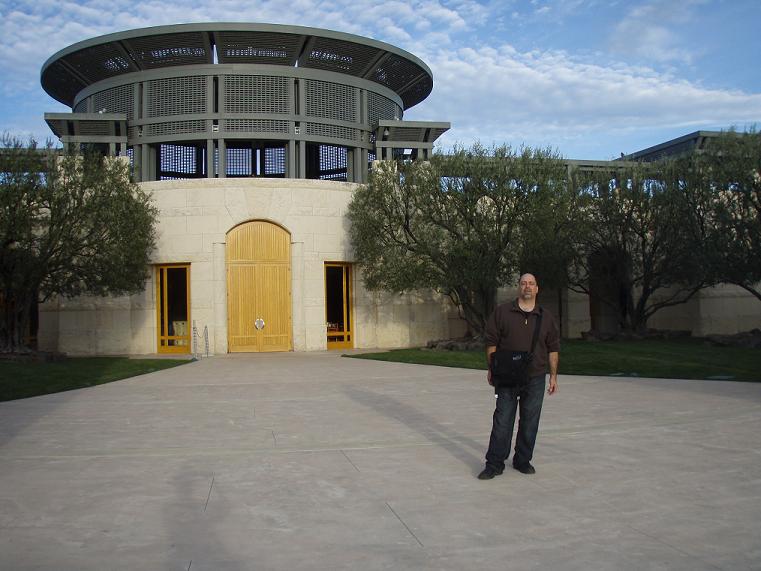 Expectation can be a heavy burden to live up to. Whether it’s a film, book, a bottle of wine or an athlete’s performance, anything perceived as less that the anticipated result comes off as a let down. The same of course can be true for winery visits. Producers of all shapes and size the world over open their doors and invite folks in to taste their wares and perhaps tour their facility. Sometimes it’s easier to be wowed when you know nothing of the wine or the producer in question. Again, with a lack of expectation it’s somewhat easier to impress people. Folks in all lines of work do this all the time; under promise and over deliver, it’s a classic time honored technique. But with many of the world’s wineries, particularly the well known ones, their reputation is known and the expectation level exists. Such is the case with Napa Valley’s
Expectation can be a heavy burden to live up to. Whether it’s a film, book, a bottle of wine or an athlete’s performance, anything perceived as less that the anticipated result comes off as a let down. The same of course can be true for winery visits. Producers of all shapes and size the world over open their doors and invite folks in to taste their wares and perhaps tour their facility. Sometimes it’s easier to be wowed when you know nothing of the wine or the producer in question. Again, with a lack of expectation it’s somewhat easier to impress people. Folks in all lines of work do this all the time; under promise and over deliver, it’s a classic time honored technique. But with many of the world’s wineries, particularly the well known ones, their reputation is known and the expectation level exists. Such is the case with Napa Valley’s 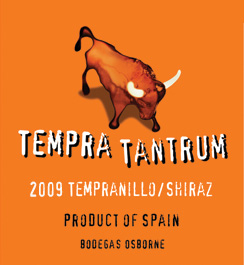 Spain has quite a number of producers with lengthy histories as family wineries. One of those is the Osbornes. Rocio Osborne is a member of the 6th generation of that family in the wine business and he produces wines under the
Spain has quite a number of producers with lengthy histories as family wineries. One of those is the Osbornes. Rocio Osborne is a member of the 6th generation of that family in the wine business and he produces wines under the  During a summer 2009 trip to Napa Valley a friend recommended
During a summer 2009 trip to Napa Valley a friend recommended  Pinot Noir is amongst the varieties that I’m pickiest about in terms of style. To start with I’m a pretty firm believer that nothing else really belongs blended in with Pinot Noir. Of course it should also be planted in an appropriate spot and be treated right every step of the way. There’s a purity and a beauty that can be achieved with this grape when it’s appropriately handled that is distinct and impressive. Of late I’ve run across more and more examples from South America that hit my sweet spot for well made Pinot that stays true to varietal character. Today I’ll look at one from Chilean producer
Pinot Noir is amongst the varieties that I’m pickiest about in terms of style. To start with I’m a pretty firm believer that nothing else really belongs blended in with Pinot Noir. Of course it should also be planted in an appropriate spot and be treated right every step of the way. There’s a purity and a beauty that can be achieved with this grape when it’s appropriately handled that is distinct and impressive. Of late I’ve run across more and more examples from South America that hit my sweet spot for well made Pinot that stays true to varietal character. Today I’ll look at one from Chilean producer 
 While I’ve been drinking Chilean wine for many years I feel reinvigorated to taste more and more of them lately. For several decades now we’ve been able to find lots of value in Chilean Wine on US shelves. But now we’re also seeing greater and greater numbers of wines in all price categories. Prices, styles and quality vary; but the bang for the buck is pretty constant across all tiers. Of course not every wine is great, but there are a lot out there to love. Today I’ll look at a Chilean blend from the Maule Valley.
The Oveja Negra 2008 Lost Barrel was produced using fruit sourced in the Maule Valley of Chile; more specifically from the winery’s San Rafael Vineyard. This blend is a combination of Syrah (40%), Carignan (40%), Carménère (18%), and Petit Verdot (2%). The Carignan vines have 40 years of age on them. The wine was aged in French oak barrels for 12 months. It has a suggested retail price of $25.
While I’ve been drinking Chilean wine for many years I feel reinvigorated to taste more and more of them lately. For several decades now we’ve been able to find lots of value in Chilean Wine on US shelves. But now we’re also seeing greater and greater numbers of wines in all price categories. Prices, styles and quality vary; but the bang for the buck is pretty constant across all tiers. Of course not every wine is great, but there are a lot out there to love. Today I’ll look at a Chilean blend from the Maule Valley.
The Oveja Negra 2008 Lost Barrel was produced using fruit sourced in the Maule Valley of Chile; more specifically from the winery’s San Rafael Vineyard. This blend is a combination of Syrah (40%), Carignan (40%), Carménère (18%), and Petit Verdot (2%). The Carignan vines have 40 years of age on them. The wine was aged in French oak barrels for 12 months. It has a suggested retail price of $25. Regardless of the grape variety in question there are always an assortment of styles and differentiations to be had. This is based on where it’s grown, how it’s grown, the manner in which it’s handled, winemaking technique and of course the year to year vagaries of weather. All that on the table, I believe Sauvignon Blanc stands as one of the varieties with the greatest number of styles and expressions. Today I’ll look at one from
Regardless of the grape variety in question there are always an assortment of styles and differentiations to be had. This is based on where it’s grown, how it’s grown, the manner in which it’s handled, winemaking technique and of course the year to year vagaries of weather. All that on the table, I believe Sauvignon Blanc stands as one of the varieties with the greatest number of styles and expressions. Today I’ll look at one from 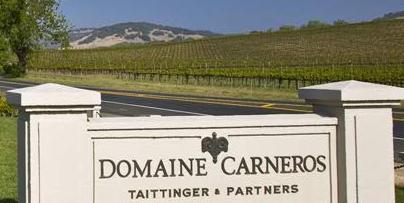 Every time I travel to California Wine Country I undergo a lot of internal tussling. Honestly long before I even book a flight I’m thinking about where I want to go to taste wine. There are of course hundreds of options. But making the choice even tougher is the lure of old favorites, sitting on my shoulder and whispering in my ear like a comfortable, well known angel. There’s something to be said for revisiting something you love, particularly the attraction of new vintages. On the other shoulder sits the unknown. This angel doesn’t look familiar but he whispers to me about unusual delights that I have yet to experience. In the end I try to strike a balance between the two with the unknown angel getting a little more of my attention. Each trip I also attempt to come up with some places I have been meaning to visit but somehow have managed to elude me. I visited one such spot a couple of days ago,
Every time I travel to California Wine Country I undergo a lot of internal tussling. Honestly long before I even book a flight I’m thinking about where I want to go to taste wine. There are of course hundreds of options. But making the choice even tougher is the lure of old favorites, sitting on my shoulder and whispering in my ear like a comfortable, well known angel. There’s something to be said for revisiting something you love, particularly the attraction of new vintages. On the other shoulder sits the unknown. This angel doesn’t look familiar but he whispers to me about unusual delights that I have yet to experience. In the end I try to strike a balance between the two with the unknown angel getting a little more of my attention. Each trip I also attempt to come up with some places I have been meaning to visit but somehow have managed to elude me. I visited one such spot a couple of days ago,  Claude managed to connect on some level with every one of them. Along the way he showed us around the facility and told us about the history of Domaine Carneros as well as the Carneros appellation itself. We tasted a quartet of Sparkling Wines on our journey, from their most widely available release, to wines that are a bit harder to come by on store shelves. In short a well planned cross section of their Sparkling Wines. In an engaging and easy to follow manner that never spoke down to anyone Jean Claude went through the production of Sparkling Wine. As we did this we made our way through the facility and saw different parts of it. It was an A to Z on Sparkling Wine that provided good basic knowledge for a newer wine lover but also a level of detail that would hold the attention of a more veteran taster.
Claude managed to connect on some level with every one of them. Along the way he showed us around the facility and told us about the history of Domaine Carneros as well as the Carneros appellation itself. We tasted a quartet of Sparkling Wines on our journey, from their most widely available release, to wines that are a bit harder to come by on store shelves. In short a well planned cross section of their Sparkling Wines. In an engaging and easy to follow manner that never spoke down to anyone Jean Claude went through the production of Sparkling Wine. As we did this we made our way through the facility and saw different parts of it. It was an A to Z on Sparkling Wine that provided good basic knowledge for a newer wine lover but also a level of detail that would hold the attention of a more veteran taster.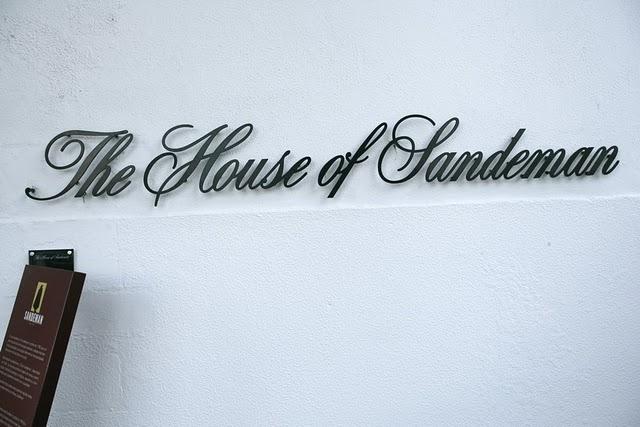 One of the many highlights of my recent trip to Portugal was visiting
One of the many highlights of my recent trip to Portugal was visiting 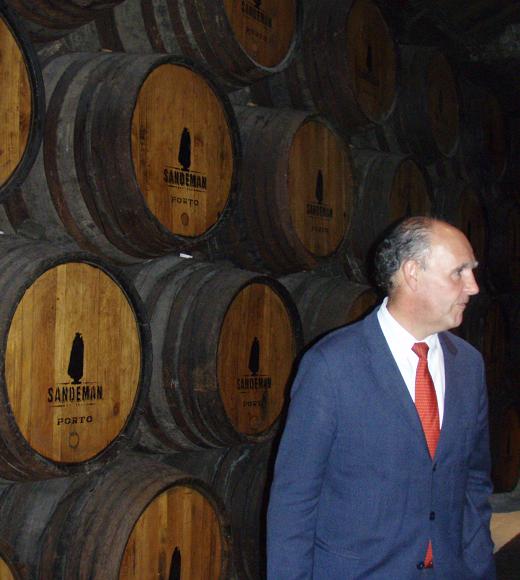
 While I was in Porto I took the time to scope out a number of Port producers. As you’d expect there are a lot of them, many of them well worth your time. However if you only have the time to visit one producer in Porto, I believe Sandeman Cellars is a perfect choice. They have the history that will wow you, the consistency of quality that will keep you coming back vintage after vintage, and the stylistic variety to appease most every palate. Once you sample the
While I was in Porto I took the time to scope out a number of Port producers. As you’d expect there are a lot of them, many of them well worth your time. However if you only have the time to visit one producer in Porto, I believe Sandeman Cellars is a perfect choice. They have the history that will wow you, the consistency of quality that will keep you coming back vintage after vintage, and the stylistic variety to appease most every palate. Once you sample the 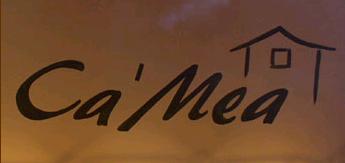 As you can probably imagine I’ve been to wine tastings of all shapes and sizes, winemaker dinners and the like. Quite frankly I thought I’d experienced every type. That was until I heard about The Grape Festival that was held last week at
As you can probably imagine I’ve been to wine tastings of all shapes and sizes, winemaker dinners and the like. Quite frankly I thought I’d experienced every type. That was until I heard about The Grape Festival that was held last week at  This was to be my first trip to Hudson NY and I didn’t know exactly what to expect. What I found was a charming town with a downtown area that brings to mind old time Americana with a hip, modern flair. All located just off the Hudson River in Columbia County NY. Entering the restaurant I was taken by the homey vibe with Tuscan flourishes. Sure I was in NY, but the warmth of the staff, the ambiance, and the smells coming from the kitchen told me I could have just as easily been in a small town in Italy.
This was to be my first trip to Hudson NY and I didn’t know exactly what to expect. What I found was a charming town with a downtown area that brings to mind old time Americana with a hip, modern flair. All located just off the Hudson River in Columbia County NY. Entering the restaurant I was taken by the homey vibe with Tuscan flourishes. Sure I was in NY, but the warmth of the staff, the ambiance, and the smells coming from the kitchen told me I could have just as easily been in a small town in Italy. 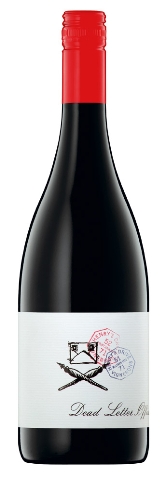 And speaking of food; oh what food. The items that Max prepared for the tasting were nothing short of sensational. Some of it was quite traditional like Pasta in Bolognese sauce, other things like a roasted apple topped with Mascarpone cheese, truly palate awakening. Potato Croquettes were delicious and addictive. Roasted pork wrapped in Bacon with an applesauce accompaniment was delectable, seasonal and a killer pairing with at least half of the 17 wines. Bottom Line, I didn’t taste a single thing that didn’t make my mouth water. Later on in the evening I had Gnocchi with fresh tomato and basil. There are many places I simply won’t order them because of the industrial tasting, heavy as marbles things that some restaurants try to pass off as Gnocchi. I was confident this wouldn’t be the case at Ca’Mea and boy was I right. Max makes his pastas in house, by hand. The Gnocchi was airy, fluffy and just imbued with the right amount of potato flavors. The fresh sauce, basil and cheese on top the appropriate accompaniment. Having the opportunity to enjoy this dish with a glass of wine talking about food with Max, Roy and Al made the experience all the better. We sat in the courtyard where heat lamps were ready to keep us warm if there had been a chill, but there wasn’t. It was the perfect Indian Summer evening.
And speaking of food; oh what food. The items that Max prepared for the tasting were nothing short of sensational. Some of it was quite traditional like Pasta in Bolognese sauce, other things like a roasted apple topped with Mascarpone cheese, truly palate awakening. Potato Croquettes were delicious and addictive. Roasted pork wrapped in Bacon with an applesauce accompaniment was delectable, seasonal and a killer pairing with at least half of the 17 wines. Bottom Line, I didn’t taste a single thing that didn’t make my mouth water. Later on in the evening I had Gnocchi with fresh tomato and basil. There are many places I simply won’t order them because of the industrial tasting, heavy as marbles things that some restaurants try to pass off as Gnocchi. I was confident this wouldn’t be the case at Ca’Mea and boy was I right. Max makes his pastas in house, by hand. The Gnocchi was airy, fluffy and just imbued with the right amount of potato flavors. The fresh sauce, basil and cheese on top the appropriate accompaniment. Having the opportunity to enjoy this dish with a glass of wine talking about food with Max, Roy and Al made the experience all the better. We sat in the courtyard where heat lamps were ready to keep us warm if there had been a chill, but there wasn’t. It was the perfect Indian Summer evening. I recently attended a tasting in NYC hosted by The Amarone Families. This is a group of 12 Family owned wineries that have formed their own association. All 12 of these families and their wineries are steeped in history, tradition and unforgiving dedication to their craft and the quality of their wines. The tasting allowed me to sample older and current vintages from each of the producers. Regardless of the style of Amarone you lean towards, they have something for you. Today I’ll take a look at a current release Amarone from one of those very families.
The
I recently attended a tasting in NYC hosted by The Amarone Families. This is a group of 12 Family owned wineries that have formed their own association. All 12 of these families and their wineries are steeped in history, tradition and unforgiving dedication to their craft and the quality of their wines. The tasting allowed me to sample older and current vintages from each of the producers. Regardless of the style of Amarone you lean towards, they have something for you. Today I’ll take a look at a current release Amarone from one of those very families.
The 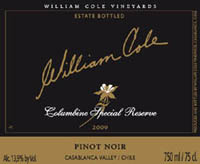 Over the last few years I’ve taken note of some impressive Pinot Noirs from Chile. It’s an understatement to say that I'm excited about that turn of events. Pinot is one of my favorite varieties when it’s great, trouble is it’s not exceptional often enough. Too often, particularly in California, it’s planted in the wrong spot or treated with a heavy hand. A dollop of Pinot Noir in another variety is fine with me, anything else blended into a varietal Pinot Noir, not so much. Today I’ll look at a Chilean Pinot Noir that hit the spot for me.
Over the last few years I’ve taken note of some impressive Pinot Noirs from Chile. It’s an understatement to say that I'm excited about that turn of events. Pinot is one of my favorite varieties when it’s great, trouble is it’s not exceptional often enough. Too often, particularly in California, it’s planted in the wrong spot or treated with a heavy hand. A dollop of Pinot Noir in another variety is fine with me, anything else blended into a varietal Pinot Noir, not so much. Today I’ll look at a Chilean Pinot Noir that hit the spot for me.
 Whether it’s a $10 bottle or a $75 bottle I’ve found that the wines
Whether it’s a $10 bottle or a $75 bottle I’ve found that the wines 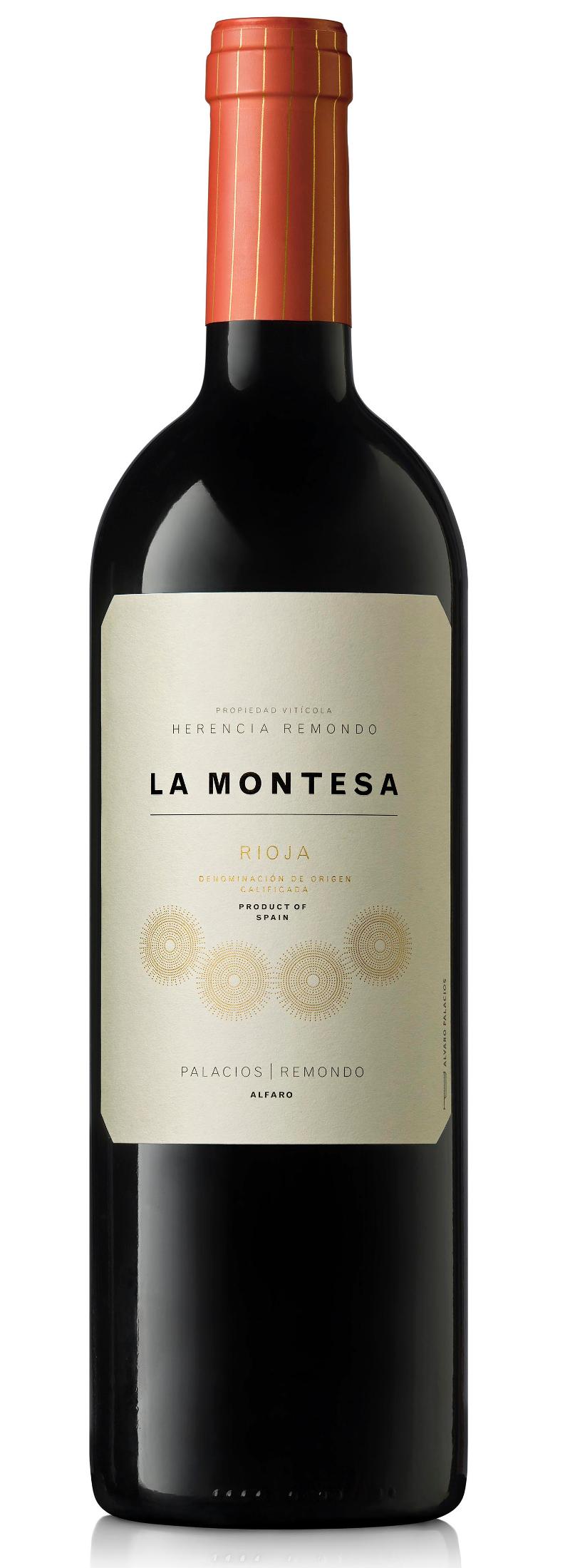 When I first started drinking Spanish wine, most of what I explored was from Rioja. Many of them, Tempranillo based wines. As time has gone on of course I’ve looked to numerous other Spanish wine regions; not to mention a host of other grape varieties. Rioja however retains a special significance for me. Today I’ll look at a new release from
When I first started drinking Spanish wine, most of what I explored was from Rioja. Many of them, Tempranillo based wines. As time has gone on of course I’ve looked to numerous other Spanish wine regions; not to mention a host of other grape varieties. Rioja however retains a special significance for me. Today I’ll look at a new release from  With fall here and a chill in the air I start to think of Rosé a little differently. In the warmer months I think of how thirst quenching it can be; not to mention its crowd pleasing ability. This time of the year my thoughts veer towards the flexibility and adaptability that good Rosé shows off with a variety of foods. Thanksgiving, which is perhaps the most American of Holidays, is a perfect time to pull out Rosé. The typical Thanksgiving table is loaded with a variety of flavors, a challenge to pair wines with, but just the job Rosé was created to conquer. Today I’ll look at one from the Loire Valley that I strongly recommend considering for your holiday table.
Attitude by
With fall here and a chill in the air I start to think of Rosé a little differently. In the warmer months I think of how thirst quenching it can be; not to mention its crowd pleasing ability. This time of the year my thoughts veer towards the flexibility and adaptability that good Rosé shows off with a variety of foods. Thanksgiving, which is perhaps the most American of Holidays, is a perfect time to pull out Rosé. The typical Thanksgiving table is loaded with a variety of flavors, a challenge to pair wines with, but just the job Rosé was created to conquer. Today I’ll look at one from the Loire Valley that I strongly recommend considering for your holiday table.
Attitude by  Valdivieso 2005 Eclat
Valdivieso 2005 Eclat De Martino 2006 “Las Cruces” Single Vineyard Old Bush Vines
De Martino 2006 “Las Cruces” Single Vineyard Old Bush Vines Estampa 2008 Gold Assemblage Carmenère
Estampa 2008 Gold Assemblage Carmenère 
 Maquis 2006 Lien
Maquis 2006 Lien Hacienda Araucano 2008 Clos de Lolol
Hacienda Araucano 2008 Clos de Lolol Emiliana 2007 Coyam
Emiliana 2007 Coyam Casas del Bosque 2007 Gran Estate Selection Private Reserve
Casas del Bosque 2007 Gran Estate Selection Private Reserve One of the constantly fascinating things about wine is the sense of discovery that waits around every corner and in most every bottle. Depending on how adventurous you are you may find new things in your local wine shop, online or when you visit the wine regions of your choice. V.Sattui Winery is one of the age old secrets that await you in Napa Valley. They sell their wines through the tasting room and online, direct to consumers. So unless you’ve been to Napa or a friend has gifted you a bottle, you might not know about them. That would be a shame as they’ve been turning out a diverse selection of fine wine for a long, long time. Today I’ll look at the current release of one of their Zinfandels.
The
One of the constantly fascinating things about wine is the sense of discovery that waits around every corner and in most every bottle. Depending on how adventurous you are you may find new things in your local wine shop, online or when you visit the wine regions of your choice. V.Sattui Winery is one of the age old secrets that await you in Napa Valley. They sell their wines through the tasting room and online, direct to consumers. So unless you’ve been to Napa or a friend has gifted you a bottle, you might not know about them. That would be a shame as they’ve been turning out a diverse selection of fine wine for a long, long time. Today I’ll look at the current release of one of their Zinfandels.
The  Last Week I had the opportunity to travel to Portugal for the first time. In a handful of days I felt fully engrossed in the food, wine and culture of the country. Over the next few weeks I’ll take an occasional, and in-depth, look at a number of the experiences I had while visiting this charming and beautiful country. The wines, the food, the scenery and the people were each beautiful and welcoming in their own way. So please sit back and enjoy.
When it comes to Portugal, naturally the first thing that comes to mind, at least for me, is Port. These legendary wines can last more than a generation in great vintages. But of course there are so many other iterations which are distinct from Vintage Port. From Ruby Port, to Tawny and Late Bottled Vintage the styles and variations are many. While visiting Portugal I spent a significant amount of time at
Last Week I had the opportunity to travel to Portugal for the first time. In a handful of days I felt fully engrossed in the food, wine and culture of the country. Over the next few weeks I’ll take an occasional, and in-depth, look at a number of the experiences I had while visiting this charming and beautiful country. The wines, the food, the scenery and the people were each beautiful and welcoming in their own way. So please sit back and enjoy.
When it comes to Portugal, naturally the first thing that comes to mind, at least for me, is Port. These legendary wines can last more than a generation in great vintages. But of course there are so many other iterations which are distinct from Vintage Port. From Ruby Port, to Tawny and Late Bottled Vintage the styles and variations are many. While visiting Portugal I spent a significant amount of time at 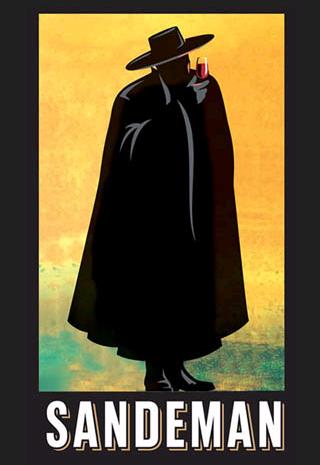 The highlight of the Port based cocktail experience, for me, occurred several hours before dinner on Saturday. Along with the other folks I was travelling with, Sandeman Cellars treated us to a couple of hours with a Mixologist. This took place in a classroom/laboratory like setting within the Sandeman facility in Porto. Our teacher so to speak was an engaging fellow named Kiko. He took us through the basics of making cocktails using three classic methods. Along the way he showed us some recipes that incorporated Port of course. And then the real fun began. Our group was broken up into teams of two. Each team was given 45 minutes to come up with an original cocktail. The only rule was that it should contain one of the Sandeman Ports at our disposal. After an initial recipe my teammate and I attempted, flopped miserably, we raced the clock with only 10 minutes left. At that point my teammate James and I decided to base ours on 10 Year Old Tawny Port. To this we added simple syrup, muddled in some nectarine and topped it with Champagne. For garnish we added a strawberry and nectarine slices. Considering our original failed experiment and the minimal time we had, I think we did OK. The judges seemed to agree as we took 2nd place for what we dubbed The Sandeman Metro.
The highlight of the Port based cocktail experience, for me, occurred several hours before dinner on Saturday. Along with the other folks I was travelling with, Sandeman Cellars treated us to a couple of hours with a Mixologist. This took place in a classroom/laboratory like setting within the Sandeman facility in Porto. Our teacher so to speak was an engaging fellow named Kiko. He took us through the basics of making cocktails using three classic methods. Along the way he showed us some recipes that incorporated Port of course. And then the real fun began. Our group was broken up into teams of two. Each team was given 45 minutes to come up with an original cocktail. The only rule was that it should contain one of the Sandeman Ports at our disposal. After an initial recipe my teammate and I attempted, flopped miserably, we raced the clock with only 10 minutes left. At that point my teammate James and I decided to base ours on 10 Year Old Tawny Port. To this we added simple syrup, muddled in some nectarine and topped it with Champagne. For garnish we added a strawberry and nectarine slices. Considering our original failed experiment and the minimal time we had, I think we did OK. The judges seemed to agree as we took 2nd place for what we dubbed The Sandeman Metro.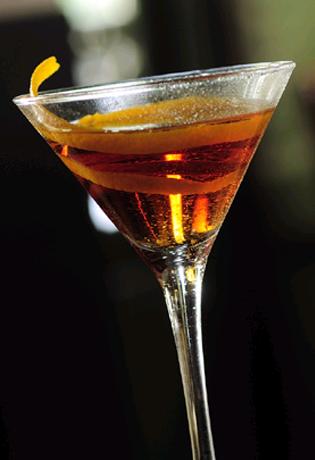 The range of possibilities is staggering, if you think about it. Port can be mixed with Fruit, spices, sodas, vegetables, hard liquor, and Champagne to name but a few.
The range of possibilities is staggering, if you think about it. Port can be mixed with Fruit, spices, sodas, vegetables, hard liquor, and Champagne to name but a few.  In my continuing effort to alert my readers to cool opportunities I’ve got some information about a contest that will take a winner and a friend to Chile for an entire week. This
In my continuing effort to alert my readers to cool opportunities I’ve got some information about a contest that will take a winner and a friend to Chile for an entire week. This 